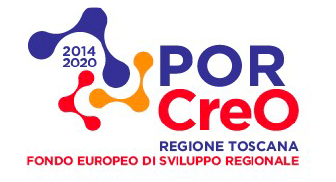EXCELLENCE CERTIFIED
Many small and medium-sized firms ‘cultivate’, as it were, this tiny (but ‘fertile’) patch of land, and abundant ‘crop’ of knowledge, of technical competence, of ideas, of innovation and of beauty.
EXCELLENCE CERTIFIED
Many small and medium-sized firms ‘cultivate’, as it were, this tiny (but ‘fertile’) patch of land, and abundant ‘crop’ of knowledge, of technical competence, of ideas, of innovation and of beauty.
DISTRICT EMAS

Our district takes great pride in having received a Homogeneous Production Areas (APO) certificate, issued by the EMAS Committee, attesting to the quality of our strategic environmental policies as delineated by the Comitato Promotore di Emas (EMAS proponent committee).
APEA, AEA

The project for transformation of the artisanal and industrial areas into an APEA (Area Produttiva Ecologicamente Attrezzata, or ecologically equipped production area) came about through the efforts of the municipality, Comune di San Miniato, undertaken to initiate a process of requalification of an important part of its circumscription, the aim being to bring about an innovative management model that might be applied to other production zones of the same municipality.
The aim of APEA is unitary integrated management of a production area in accordance with criteria of environmental and economic sustainability, of participation, and of shared objectives and development programmes.
A fundamental prerequisite of APEA qualification is the presence of a single Soggetto Gestore or management actor for the area, to be appointed once the requalification work of the Consorzio Cuoiodepurhas been completed.
This Soggetto Gestore handles relations with the Comune (municipality) and with companies, administering and managing APEA and implementing environmental improvement plans and initiatives that enable companies to benefit from economies of scale and also benefit from the savings deriving from correct management of the area.
For further information, see www.apeaponteaegola.it
LCA

Our growing awareness of the importance of environmental safeguards − and of the impacts of goods and services − has sustained the greater efforts dedicated to developing methods for understanding and thus abating impacts. One technique of this kind is known as life cycle assessment (LCA), as governed by the standards, ISO 14040-14044.
LCA considers the environmental aspects and potential impacts of products over their entire life cycle (i.e. from cradle to grave). LCA entails analysis of the impacts of products at all stages of their life, right from the design stage to procurement of raw materials, manufacture, use and – finally − disposal (also including analysis the impacts of transport at all stages).
LCA is a rigorous scientific instrument and a major step forward in developing our awareness of the environmental impacts of production of goods/services. LCA provides information fundamental when seeking to pinpoint the areas for intervention that are most susceptible to improvement.
The need to arrive at such a methodology frequently accompanies practical queries that are increasingly raised by entrepreneurs anxious to keep up with developments over time.
LCA enables:
- identifying openings for improvement of the environmental impacts of products at the various stages of their life cycles;
- industrial decision-making, e.g. strategic planning, priorities, product or process design or re-design work;
- identifying significant environmental performance indicators and techniques for gauging the same
- use of green marketing instruments (both B2B and B2C), with LCA serving as an objective scientific benchmark of reference.
Use of resources, human health and the potential effects of climate change are the main classes of environmental impact that the LCA procedure enables consideration of.
The District undertook LCA study of two of its most characteristic products: tanned hides and sole leather. LCA was adopted as a cognitive instrument and also as an instrument potentially of use for the purposes of valorization and marketing. LCA studies are required to qualify for Type III Product Environmental Footprint (PEF) ecological labelling. These procedures are at the development stage in the European Union. The District has engaged in such studies on an ongoing basis also for this particular reason. Indeed, the latest upgrade took place in 2019.
PEF – PRODUCT ENVIRONMENTAL FOOTPRINT


The project going under the name PREFER (PRoduct Environmental Footprint Enhanced by Regions) − coordinated by the Istituto di Management of the Scuola Superiore Sant’Anna (Pisa) and funded by the European Commission (Life plus fund) – represented a new opportunity for eco-innovation of the products of the Tuscan fashion district (Distretto della Moda Toscano), with the focus on environmental sustainability and corporate competitiveness.
This grouping of enterprises chose to host not only the distretto tessile di Prato (Prato textiles district) and the distretto dell’abbigliamento di Empoli (Empoli clothing district) but also the Distretto conciario di Santa Croce sull’Arno (the tannery district of Santa Croce sull’Arno). This work enabled calculation of the environmental footprint of a normal product of the fashion chain (e.g. shoes).
This project led to validation of this new European methodology for assessing the ecological footprints of products and services, with an account of the environmental aspects of such products and services.
.

Where are we
Piazza Stellato Spalletti, 12
56028 San Miniato, Pisa
Contacts
info@consorzioconciatori.it
Tel.
+39.0571-499477
Fax
+39.0571-499450





Consorzio Conciatori Ponte a Egola
Operazione/progetto co-finanziato
dal POR FESR Toscana 2014-2020
Asse1 Azione 1.1.2
see project

